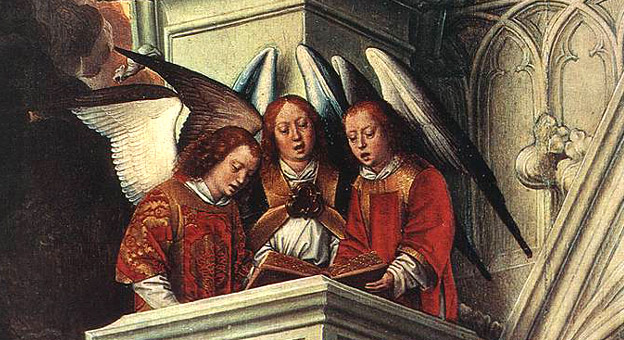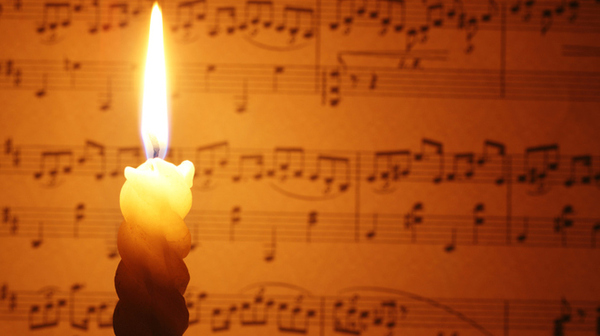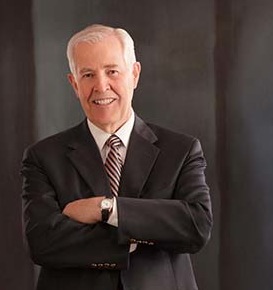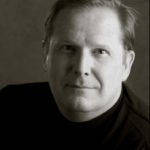Music of the Masses – program notes
On the occasion of our 25th anniversary, tonight’s concert will reprise highlights selected from past performances of some of our favorite masses. Plus, we present a rare treat: one of the 20th century’s greatest choral pieces, the Mass for Double Choir a cappella (1926), composed by Frank Martin. This is the first time Utah Chamber Artists has performed this extraordinary work.
A Sacred Journey
The Catholic mass is one of many rites among various world religions that in one way or another seek to portray life as a sacred journey, aided by the prayers and sacraments of the faithful. It can be structured according to the occasion that it marks, whether for daily worship or for the unique circumstances of special days or times, such as funerals, or religious holidays such as Easter or Christmas. In their Latin form its texts date back to the early centuries of the Christian era when Rome was the ruling empire and Latin was the lingua franca. More recently, non-Latin and even non-liturgical texts have been used to more closely reflect the religious and national sensibilities of the modern world. Thus, the “mass” has taken on a larger, more universal meaning, no longer exclusively Roman Catholic. As a musical form, it has served as a ready structure for many composers and styles, ranging from the earliest examples based on Gregorian chant to the operatic extravagances of Verdi and Berlioz, or the symphonic dimensions of Beethoven’s Missa solemnis.
That existence has meaning and that life has purpose are assertions that must struggle for their place in the human heart with each new generation. Modern physics suggests that time, as we experience it, is illusory, passing from an irretrievable past toward an unknown future. It can be difficult to relate the obvious experiences of life to the esoteric implications of such theories, but if we take the larger view, there is also something to be learned, for in this view, time finds a perfect analog in music. Music is immaterial and perceptible only in the on-going flow, neither past, present, or future, yet we experience it as an entity. In the same way, we experience our life’s journey as something either in progress, or ultimately, completed. In the mass, and in similar rituals, the whole of life is compressed into something more comprehensible and meaningful than the minor fluctuations of temporary experience. Music can do likewise, for as Mahler famously said, “The whole world can be contained in a symphony.” If goodness or beauty can be captured by such improbable means, that is reason enough to believe in such immaterial virtues as St. Paul’s faith, hope, and love. And where there is true love, there is God.
Other Worldly Space and Time
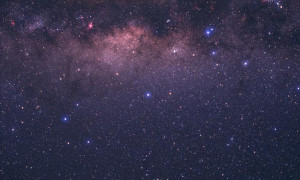 Meditations such as these Catholicism’s most sacred rite, texts which, grounded in traditional scripture, resonate with all Christians and other persons of good will. Born in Geneva Switzerland in 1890, Martin spent most of his life in the Netherlands. He was a profoundly devout Christian and after composing the Mass in 1922, he put it in a drawer not really wanting to share it. He is quoted as saying,
Meditations such as these Catholicism’s most sacred rite, texts which, grounded in traditional scripture, resonate with all Christians and other persons of good will. Born in Geneva Switzerland in 1890, Martin spent most of his life in the Netherlands. He was a profoundly devout Christian and after composing the Mass in 1922, he put it in a drawer not really wanting to share it. He is quoted as saying,
I did not want it to be performed . . . I consider it . . . a matter between God and myself. I felt then that an expression of religious feelings should remain secret and removed from public opinion.
Overcoming his reticence, Martin seems to have shared it eventually with Franz Brunnert, director of the Bugenhagen Kantorei in Hamburg, because Brunnert convinced him to publish it, and it was premiered in 1963. Slightly more than half a century later, it is still relatively unknown to the musical public, for no other reason, apparently, than its extreme difficulty.
Obviously, the Mass is text-driven. Martin has been unusually careful to observe the speech rhythms of each phrase and to give each section its own profile, expressing the emotional as well as the cognitive meaning of the words. Yet it is a work of great structural integrity, filled with memorable motives, varied textures, and rhythmic vitality. The ever-changing modal harmonies seem to be suspended from heaven rather than built up from the ground, yet without fail at the end of each section they cadence on standard major chords or open fifths. These cadences provide refreshing points of orientation in a work that uses complex harmonies to magnify its sense of other-worldly space and time.
As in a great drama, the two choirs play separate, yet coordinated roles, sometimes working together in complicated polyphonic passages, and at other times serving as background or foundation for colorful solos, chant-like passages, and other types of contrast derived from several types of renaissance and baroque polyphony. Chanted repetitions of “Pleni sunt coeli” and “Benedictus” are used to exploit the cumulative sound of their hard consonants for sonorous effect. And, in several instances, Martin uses extended bass drones both to color and to stabilize harmonic background. Tone painting (an easily-recognized example is the butterfly-like fluttering of the “et resurrexit”) is another device worth watching for.
More generally, commentators have noted the sublime expressiveness, luxurious harmonies, and gentility of the music. The overall effect is one of timelessness, like the vast expanse of stars in the night sky, stretching from horizon to horizon.
In fact, it is this feeling of the continuous stretching of the harmonic fabric that is the tensile strength of the work — a sense of restraint and control, without dramatic pyrotechnics or even lyric beauty. Surprisingly, for all the attention paid to text declamation and tone painting, the Mass is not lyrical in the same way as, say, Faure’s Requiem. Its appeal comes from texture and color, and the sense that the music somehow floats in space. The effect is enhanced by the absence of instruments and the resulting purity of sound.
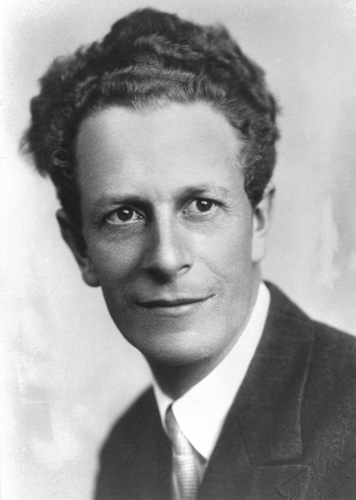 Musicologist Glenn Watkins’ assessment of Stravinsky’s Symphony of Psalms seems remarkably apt as a description of Martin’s Mass:
Musicologist Glenn Watkins’ assessment of Stravinsky’s Symphony of Psalms seems remarkably apt as a description of Martin’s Mass:
. . . a work of stark spirituality and uncommon power, a manifestation of the composer’s [Stravinsky’s] desire always to keep his expression severely under control; in part a suppression of the ego “dedicated to the glory of God” . . .
There is a kind of refined spirituality that recognizes the incomprehensible chasm that separates man from God, and the consequent reticence of a too-familiar worship. What we hear is a work lying somewhere between Stravinsky’s “starkness” and the reserved but tender innocence of Fauré. Martin’s piece, though comforting in its radiant beauty, posits a conception of God defined by a selfless humility before the awe and wonder of a magnificent universe, made manifest by the medium of sincere, carefully crafted music, ultimately removed from, and untainted by, human ambition.
* * * * * *
 Lux Aeterna
Lux Aeterna
In contrast to Martin’s Mass, which is Ordinary, the requiem mass is Proper. Over the centuries, the form of the requiem has been altered considerably to reflect the sensitivities of the occasion. For example, the more joyful “Gloria” is usually omitted, and for many years the doleful “Dies irae” (“day of wrath and judgment”) was added. Since the Second Vatican Council, the “Dies irae” has become optional. The “Credo” is likewise omitted in favor of more specialized texts which take the form of prayers. The processional or “Introit” features a prayer asking that the dead may enjoy “eternal rest” and “perpetual light,” while the “Pie Jesu” is a very personal appeal to Jesus for mercy. The “Libera me” is a plea that the dead person can be freed from the grasp of hell and instead enjoy the light of heaven, while the point of “In paradisum” should be obvious. Sometimes, these texts are divided and individualized. The “Lacrimosa,” for example, is part of the “Dies irae,” but because of its particular emotional content, emphasizing the aspect of weeping for the dead, it is frequently treated as a separate section with its own musical character.
Tonight’s program recalls a UCA performance of the “Introit and Kyrie” from the Requiem of 20th-century French organist Maurice Duruflé. Duruflé began his Requiem in 1941 but because of WWII did not complete it until 1947. Based almost entirely on chants from an ancient Gregorian mass, this work is much admired for the fluid lyricism of its melodies and beautiful organ accompaniments.
Mozart’s famous Requiem (1791) was commissioned under mysterious circumstances that seemed to portend his own immanent mortality, forebodings confirmed by his death in the same year, even as he labored frantically to complete it. Appropriately, we will hear first the “Dies irae” followed by the poignant “Lacrymosa,” both from Mozart’s revered but tragic masterpiece.
One of the most engaging requiems of the recent past is that of Gabriel Fauré, one of the important French composers whose life spanned the great divide between 19th-century Romanticism and 20th-century Modernism. Fauré spent much of his life as a working church musician, but is said to have composed his Requiem “purely for the pleasure of it.” A lyrical, upbeat setting, Fauré described it as a piece “as gentle as myself.” It foregoes the “Dies irae” completely, focusing instead on the blessedness of death and its consequent release from the ills of life, beautifully represented here by his setting of the “Sanctus,” featuring the thrice-repeated “Holy, holy, holy” — the great Hebrew hymn of praise borrowed from the ancient rites of the Jerusalem Temple.
Lastly, John Rutter’s “Blessed are the dead which die in the Lord” (Rev. 14:13) comes from the final movement of his Requiem, “Lux aeterna.” Rutter, of course, is the well known contemporary English composer. His Requiem follows in the tradition of Brahms and other composers who chose to substitute or embellish the traditional Latin texts, either with the same texts translated into their own language or with new texts appropriate to the need of comforting those who mourn. The following explanation accompanies a recent recording:
John Rutter wrote his luscious as well as delicately beautiful Requiem in 1985. As Protestants, the English have long had the freedom of mixing vulgar [English] and Latin freely. Rutter relies on the most beautiful and basic of the Latin requiem texts, but chooses English to express new Psalmic texts, in particular the well-known, The Lord Is My Shepherd.
As a final observation, one might say that, of the many genres of sacred music, none has surpassed the mass as repository of reverent contemplation, spiritual reflection, and a fountain of beauty — indeed, Music for the Masses.
 Roger L. Miller is a musician and professor emeritus of musicology. Born in 1937, he grew up in Idaho Falls, Idaho, in a musical family. He earned his bachelor’s degree in music education and his master’s in music theory from Brigham Young University. He earned his doctorate in musicology at Case Western Reserve University.
Roger L. Miller is a musician and professor emeritus of musicology. Born in 1937, he grew up in Idaho Falls, Idaho, in a musical family. He earned his bachelor’s degree in music education and his master’s in music theory from Brigham Young University. He earned his doctorate in musicology at Case Western Reserve University.
In 1982, he was appointed a visiting assistant professor at the University of Utah. He enjoyed a twenty-five year tenure at the university, retiring as full professor. He worked with former department chair Edgar J. Thompson in the planning and construction of the Libby Gardner Concert Hall as well as the renovation of the David P. Gardner Hall into a world-class teaching environment. He also directed the selection of and planning for the Lively-Fulcher pipe organ that graces the Libby Gardner Concert Hall. He helped assemble the collection of research and study materials for Emma Ray Riggs McKay Music Library. He was honored with the 2012 Camerata Award. Miller serves on the Utah Chamber Artists and Heritage Music Series boards and writing critical commentaries on the lives and contributions of a number of Utah composers and musicians. He is a member of The Church of Jesus Christ of Latter-day Saints. He wrote the music for “Know This, that Ev’ry Soul Is Free” for the 1985 Hymnbook. He is a past member of the General Music Committee of the Church of Jesus Christ. From 1985 to 2010, he wrote the broadcast continuity for the Mormon Tabernacle Choir‘s weekly program, Music and the Spoken Word.

